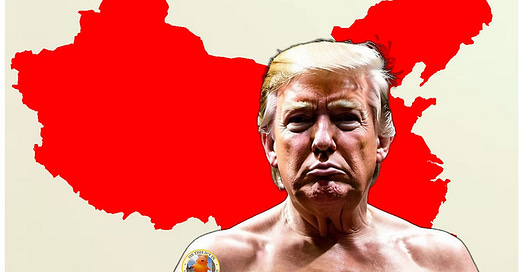This time, the tit-for-tat was almost instantaneous. Trump announced tariffs on $300 billion of Chinese goods. So, not surprisingly, OTDI 2019 President Xi’s administration declared it would retaliate by imposing tariffs on $75 billion of U.S. exports—including a bump in the average tariff on American cars.
Trump’s response — on this very same day — was that he would retroactively increase some tariffs on around $500 billion worth of clothing, shoes, and consumer electronics. And so on, and so on.
This is how wars escalate. This is how countries, and their people, face economic upheaval. Remember just a few days ago we pointed out that much of the gains Trump claimed he made in U.S. jobs creation were simply wiped out by the trade war he decided to pick.
Trump’s trade war hurt. Biden/Harris’s plans are more strategic. Trump’s efforts had seemingly little impact on the U.S./China balance of power. And as we pointed out two weeks ago, the overall impact of the trade wars was pretty bad for U.S. consumers and companies; they cost us trillions of dollars, especially when considered over the years and across all the countries with which Trump picked fights.
By contrast, the Biden/Harris Administration’s policy has made more sense, according to many.
As an analysis by the Center for Strategic & International Studies concluded, Biden/Harris' “actions demonstrate an unprecedented degree of U.S. government intervention to not only preserve chokepoint control but also begin a new U.S. policy of actively strangling large segments of the Chinese technology industry—strangling with an intent to kill.” And there’s a particular focus there on factors which will help drive the 21st century, eg AI.
Dive Deeper
Scan the Peterson Institute’s Trade War Timeline
Check out the CSIS take on the battle for AI supremacy




